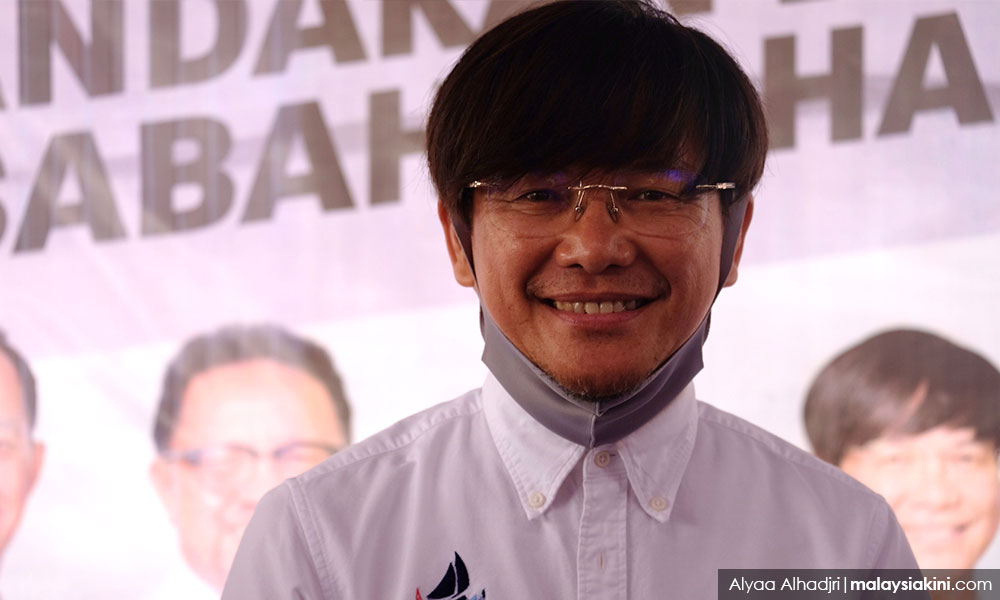A Sabah lawmaker has urged the authorities to disclose the status of their investigations into the alleged goat farming project on a remote island in Sabah.
Elopura assemblyperson Calvin Chong said he and Sekong assemblyperson Alias Sani had not received any updates on the matter since they filed a police report on Oct 10.
“The authorities should clarify whether the state land has been given ownership using the correct procedure.
“If that is true, then the public deserves to know why the state government agreed to allow a mega goat farm on an island that is mostly uninhabited without water or electricity,” the pair said in a statement.
Alias and Chong (above) had urged the authorities to investigate the purported official documents which appeared online in early October, alleging that the state alienated six parcels of land in Pulau Balambangan for agriculture and goat farming purposes.
Chong said an investigation was necessary to safeguard the integrity of Sabah’s heritage, noting that Pulau Balambangan was known for its minerals, particularly the highly prized silica sand.
Were letters legit?
The documents include six purported letters from the Lands and Surveys Department offering to alienate state land totalling 1,016ha on Pulau Balambangan to four companies.
This area was around the size of Universiti Kebangsaan Malaysia (UKM) in Bangi, Selangor - one of the largest campuses in the nation.
Based on the coordinates in the letters, the five parcels of land were connected and comprised 966ha east of the island.
Two documents were dated March 12, while the remaining four - each specifying exactly 234ha - were dated July 18. In each of the four letters, the stated land utilisation was “goat farming” exclusively.
All the documents were signed by Sabah Lands and Surveys Department director Bernard Liew.

When contacted by Malaysiakini, Liew declined to comment on the authenticity of the documents because it was under police and MACC investigations.
“The authorities have recorded our statements. Let MACC and the police investigate the matter and establish the veracity of those viral documents,” he said.
Repeated attempts to seek a status update on the investigations from the police and MACC have gone unanswered.
CM denies wrongdoing
All six purported offers to alienate land were awarded to four different companies owned by the same person - Thomas Hah Tiing Siu.
On Oct 15, Hah issued a statement that he was withdrawing his investments from an agro-development project.
“After taking into account the issues and polemics raised by certain parties and having taken due consideration of the issues, it is with full regret that the company has decided to withdraw investment proposals in the development of the agricultural sector in the areas involved,” he said.

On Oct 9, Sabah Chief Minister Hajiji Noor denied impropriety in the land applications because it was approved by the Kudat district Land Utilisation Committee.
“Applications involving Yayasan Sabah have been referred to the board of Innoprise Corporation Sdn Bhd (ICSB) and everything was in accordance with the law.
“Investigations are being conducted against the officers who divulged confidential documents,” he said, according to Berita Harian.
It is uncertain if any of the six purported letters involved land belonging to Yayasan Sabah - a state-run foundation and parent company of ICSB.

Remote island
Incidentally, the area earmarked for “goat farming” in the purported letters was about 3km west of an area where activists claimed silica mining was taking place in 2020.
That project involved a joint venture between Yayasan Sabah and Sarawak-based conglomerate KTS Group. The joint venture was signed in 2019.
Satellite photos of the area dated Nov 17 do not show evidence of sand mining activities taking place currently.
Silica sand contains a high proportion of silicon dioxide (SiO₂) with a wide variety of high-value industrial applications such as glassmaking, photovoltaic (PV) cells for solar panels, and silicon wafers for computer chips.
Pulau Balambangan is populated by three tiny villages on the east. The island is not on the electricity grid and there appear to be no plans to power the island based on the Sabah Energy Roadmap and Master Plan 2040.
A study by three UKM researchers concluded that the western part of the island contained geological features formed since the Cretaceous period of high geo-heritage and aesthetic value that must be protected for future generations.
The island is located within the Tun Mustapha Marine Park - the largest marine park in the country covering Pulau Banggi, Kudat, and Pitas.
Under Section 41 of the Fisheries Act 1954, the law severely limits development to protect corals and marine life. - Mkini

No comments:
Post a Comment
Note: Only a member of this blog may post a comment.